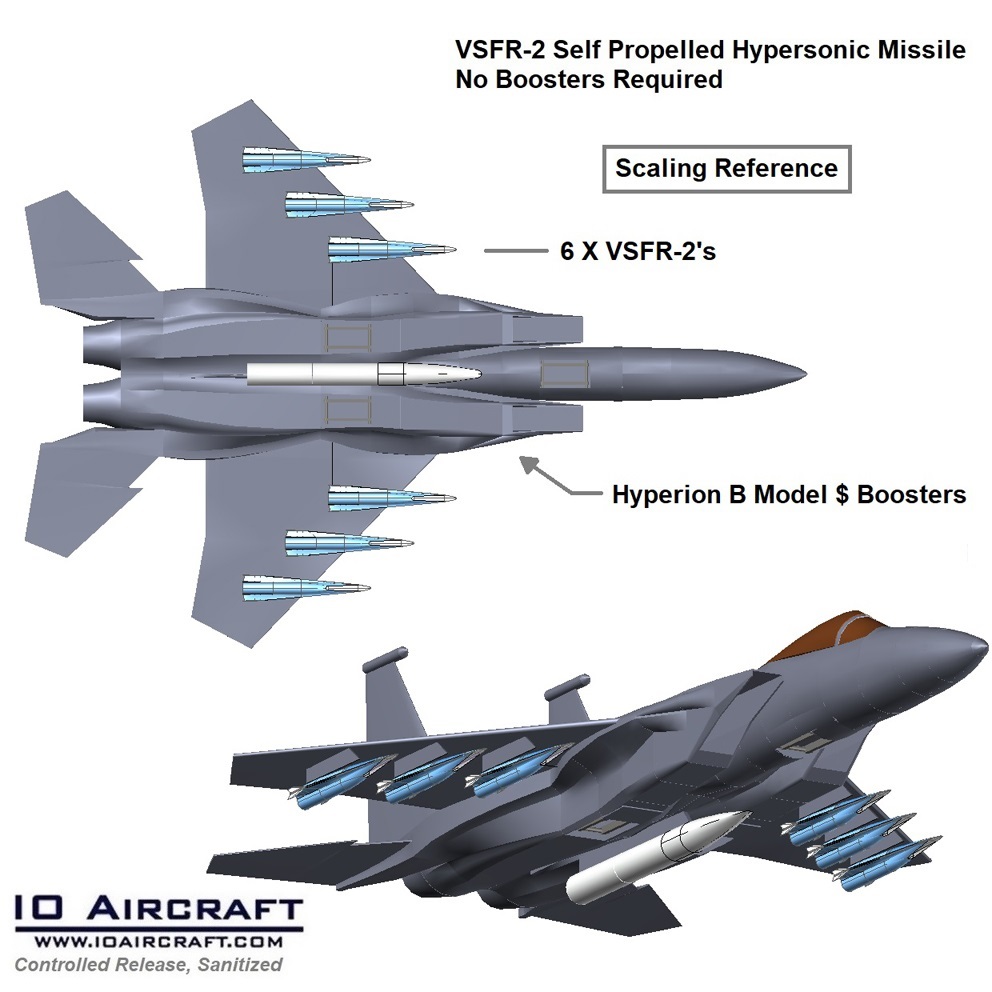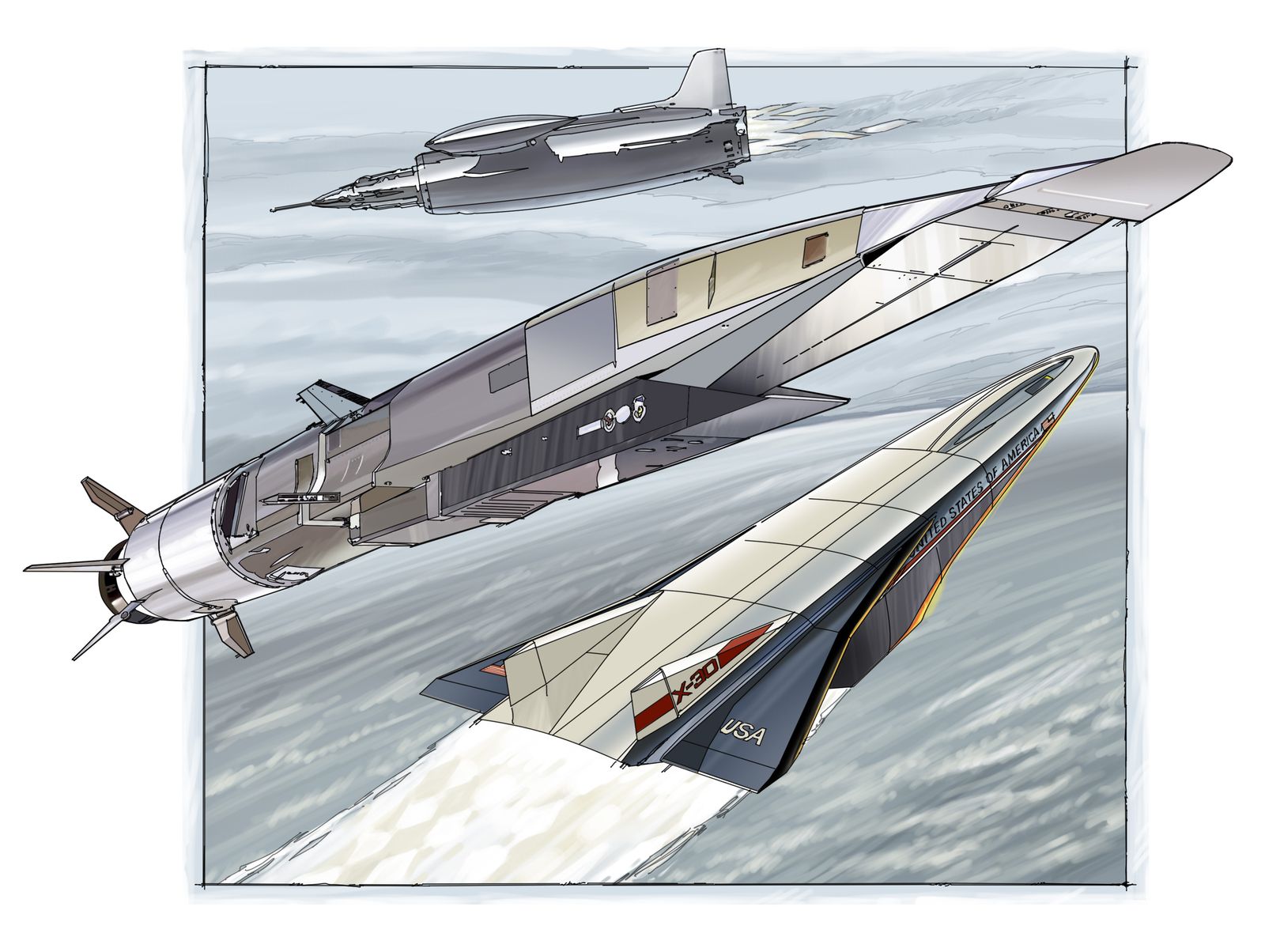Ramjet Aircraft - Key Point: Had the US Air Force actually produced the F-103, it probably would have been a total waste.
Before the advent of ICBMs in the 1950s, warhead cavalry would have trampled Washington and Moscow in the form of supersonic bombs.
Ramjet Aircraft

Current US fighters such as the F-86 Saber are considered too slow to deal with this threat. So in 1949, the United States Air Force made a request for a high-altitude interceptor that could intercept and destroy Soviet atomic bombs in space before they could land their payloads.
All About Ramjets Past, Present And The Future
Designated as the Interceptor Project in 1954 to mark the year it would enter service, the Air Force received nine proposals, three of which were selected for preliminary development: Convair with a design that later became the F-102 Delta Dagger, Lockheed with an aircraft that later became the F-104 Starfighter, and Republic Aircraft with the AP-57, later named the XF-103.
Of the three designs, the XF-103 was the most advanced. Republicans proposed a plane that could fly 2,600 miles per hour -- more than three times the speed of sound -- at an altitude of 80,000 feet. In the early 1950s, when low-flying F-86s and MiG-15s battled over Korea at speeds of several hundred miles per hour, the XF-103 looked more like a missile than an airplane.
Maybe that's because the F-103 was almost a missile. Even a photo of the plane shows what looks like a cruise missile. To achieve such high speeds, Republic - which later designed the famous F-105 Thunderchief of Vietnam - devised a quadruple system. A Wright XJ-67 turbojet engine would power the XF-103 during takeoff and normal flight.
But for that extra bit of speed to catch the incoming herd of badgers, bears and bison Soviet bombers, the XF-103 would be fitted with a jet engine. Ramjets essentially take air from the front of the plane, mix it with fuel, and then shoot the mixture backward. It's a simple process, with the drawback that an aircraft or rocket already has to move faster than Mach 1 to compress the air enough for the jet engine to swallow it. The XF-103 turbojet would propel the aircraft to a speed high enough to allow the jet engine to enter.
Ramjets Are Making Missiles Deadlier, And That's Bad News For The U.s. Military
The XF-103 was to be armed with long-range radar, six GAR-3 Falcon infrared or radar-guided air-to-air missiles, and thirty-six unguided Mighty Mouse 2.75-inch air-to-air missiles. Adding the Mighty Mouse missiles was a no-brainer, because the Falcon—the Air Force's first operational air-to-air missile—was the total in Vietnam, with fifty-four missiles scoring only five hits. Although the XF-103 did not carry a cannon, its lack was a challenge to the American fighters in Vietnam, who assembled a missile faster than Mach 3 with a fire control radar from the 1950s.
The XF-103 was to be fitted with a special ejection system. If he loses shield pressure, the shield under the seat raises, trapping the pilot in a pressurized pod. The pilot can fly the aircraft back to base using the base controls and periscope, or if ejection is required the pod is lowered onto the rails on the underside of the fuselage and then released.
However, the XF-103 will never get beyond the ground model. "It was clear that the XF-103 was so far ahead of the state of the art that it was too dangerous to be a serious competitor to the 1954 Interceptor project," said aviation writer Joe Baugher. This made the Convair F-102 the winner of the competition for all practical purposes, and the Air Force began to lose interest in the XF-103. Continued delays and cost overruns reduced the program to just one model. The Wright XJ67 engine suffered more delays and ultimately never came to fruition. Plans to replace the Wright J65 turbojet proved impossible. The Air Force finally threw in the towel on August 21, 1957, canceling the entire XF-103 project.

If the US Air Force had actually produced the F-103, it probably would have been high-profile garbage. Fears that the Soviets had intercontinental ballistic missiles that could reach America proved unfounded (the famous "bomb gap" myth). In the early 1960s, the Soviets put most of their nuclear eggs in the ICBM basket. There weren't many bombs to intercept, nor would the F-103 be useful in low-level air combat in Vietnam. NASA engineer Laura O'Connor inspected a model of the advanced ramjet engine (scramjet) at the Langley Research Center in Hampton, Virginia.
Meet The X 24c: A Mach 6 'scramjet' The Air Force Said 'no' To
As anyone who has ever done a belly dive can tell you, if you hit a liquid without giving it time to get out of the way, it tends to come back up. Drifters beat physics by having a very smooth ride, and cars and planes do it by playing with many shapes in the sky. But there's a point, close to the sound barrier, where alignment isn't enough — the speed at which your plane's elevator hits you with seemingly insurmountable drag, teeth-rattling turbulence, and shock waves. Indeed, many believed that the sound barrier was unbreakable until on October 14, 1947, Chuck Yeager's Bell X-1 rocket proved them wrong.
But what if you could use all that pent-up air to your advantage? What if, instead of running through machines or burning in rockets, you could attach a specially designed tube, detonate it, and fire it from a high-speed nozzle, with no moving parts? You will have a very special type of jet engine, a "ground kite" capable of cutting through the air at thousands of miles per hour. You would have a ramjet
But the apparent simplicity of the jet engine is deceptive; It takes advanced aerospace engineering, sophisticated equipment and precision manufacturing to produce one -- which partly explains why an idea so close to the era of powered flight decades before it was curtailed during the Cold War achieved success, was repeatedly picked up and pushed aside.
Unlike the competition for top speed, the rockets, which burn fuel using oxidizers such as ammonium nitrate, potassium chlorate or ammonium chlorate, breathe air. So while rockets can operate in near space, ramjets must fly in the atmosphere. They also have to do it at very high speeds - around Mach 2.5-3.0, or three times the speed of sound - because jet engines work by supplementing ram pressure, the natural air pressure created by the aircraft's high speed. In other words, ramjets combine the extreme shock waves and thrusts that once opposed high-speed flight; they literally go with the flow [sources: Encyclopaedia Britannica; NASA].
Tagboard Flyers: The Story Of The B 52 Bombers That Carried The D 21 Mach 3 Ramjet Powered Reconnaissance Drones
Ramjets are more effective at long range than rockets, but have one major drawback: they are ineffective at low speeds. Therefore, they rely on rocket boosters or other vehicles to propel them. Ramjet stationary aircraft typically use hybrid engines [source: NASA].
If that description skipped you at high speed, it's probably because we skipped a lot of cool and interesting stuff. Let's take a look at how jet engines have evolved to produce this modern marvel.
A photographer with a high-speed camera films the afterburner of the I-40 jet engine at the Lewis Aeronautics Laboratory in Cleveland. (The lab later became known as the John Glenn Research Center.)

The planes fly on controlled explosions. That sounds strange until you realize that most car engines do the same: take in air, compress it, mix it with fuel, turn it on and start! You press a piston. But while gasoline and diesel engines have cyclic combustion or continuous combustion, airplanes have continuous combustion, where fuel and air mix and burn. However, burning more rubber means more gas is lost and that means more oxygen has to be taken in to correct the mixture. Dump trucks do this with fire extinguishers; For jet engines, it's more complicated [source: Encyclopaedia Britannica].
The Ramjet And The Rocket
The first operational jet aircraft flew into battle towards the end of World War II using turbojet engines, a simple but ingenious design based on the Brayton (or Joule) cycle that slows airflow and stops shock waves. It then passes through a series of rotors: rotating rotors, which slow the air, and stationary stators, which direct the airflow. Together they act as compressors that increase the pressure in the jet's combustion chambers. There, the fuel mixes with compressed air that ignites at a temperature of 1800-2800 F (980-1540 C) or higher [sources: Encyclopaedia Britannica; Kruger; Spakovsky].
Pressure increases with temperature, so this explosion creates a lot of force that does nothing but seek a quick exit. As the smoke shoots through the rear exhaust, a sensation of propelling the plane is created. On the way to the nose, the smoke also shoots out of the turbines attached to the rotors on the shaft. As the fan rotates, it transfers energy to the front compressor blades, making it complete
Ramjet motor, ramjet compactor, ramjet powered aircraft, ramjet engine aircraft, ramjet, vactor ramjet, ramjet engines, transformers ramjet, roger ramjet, ramjet otr, armada ramjet, ramjet engine used in aircraft
0 Comments